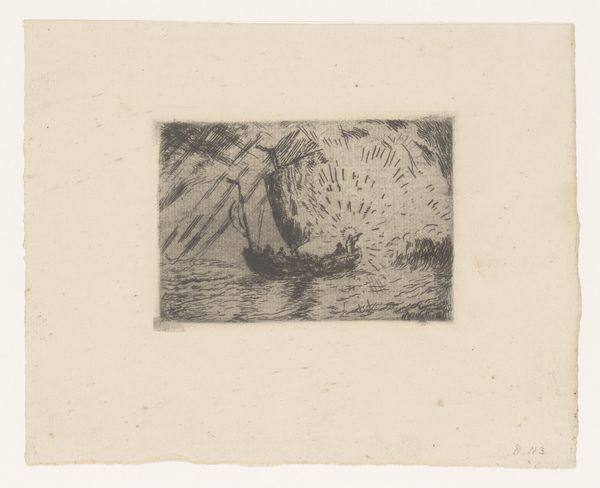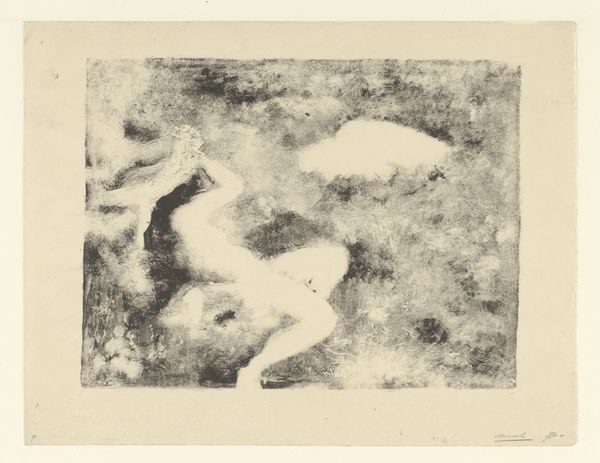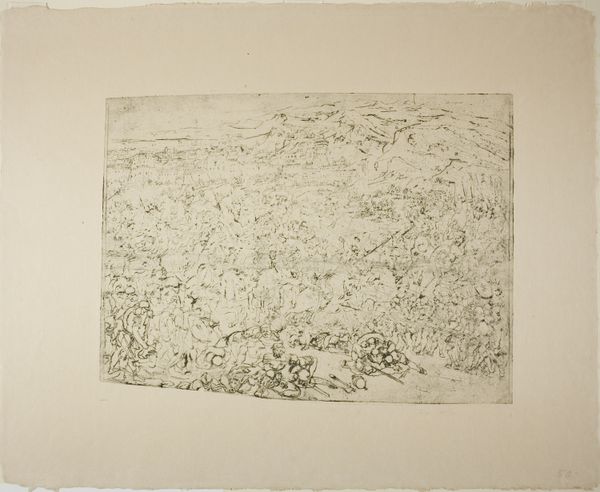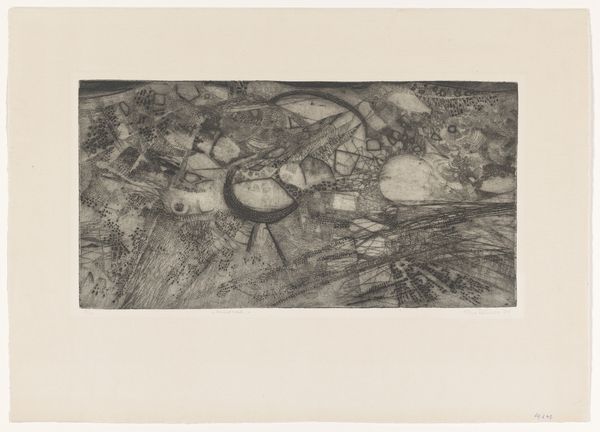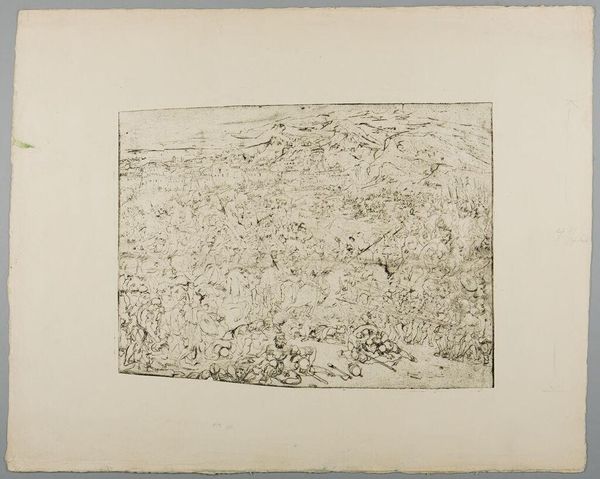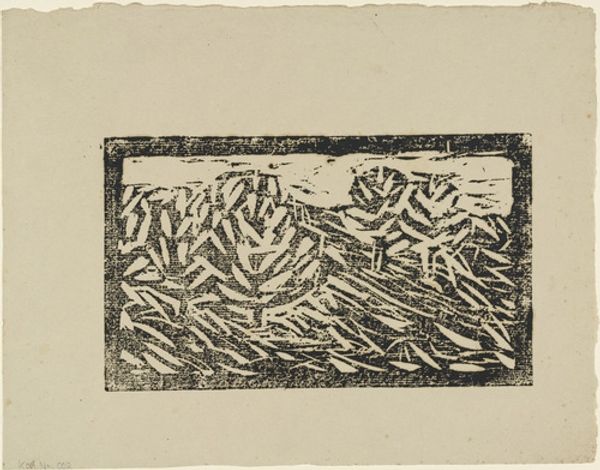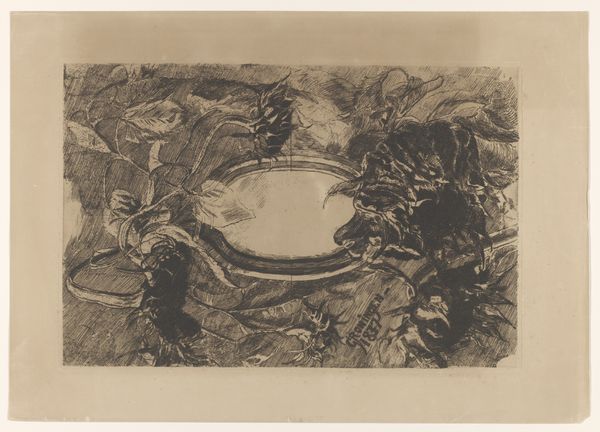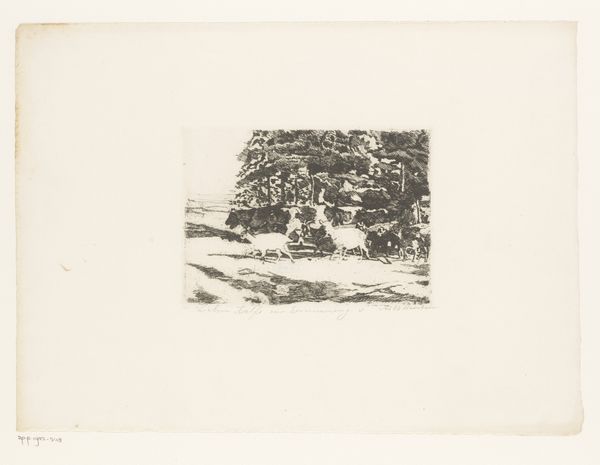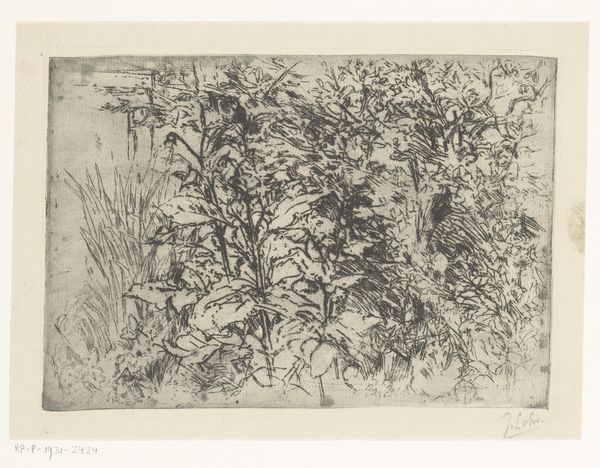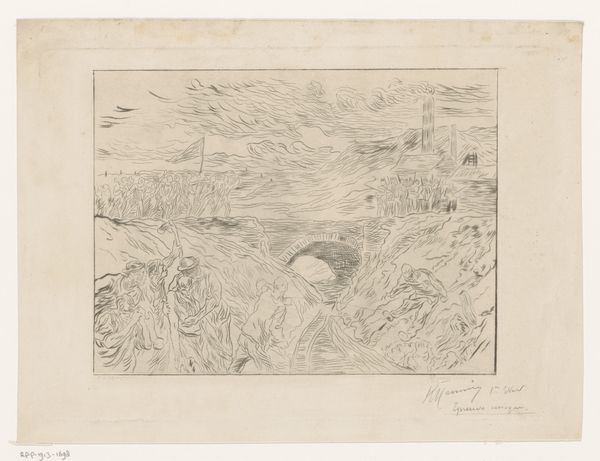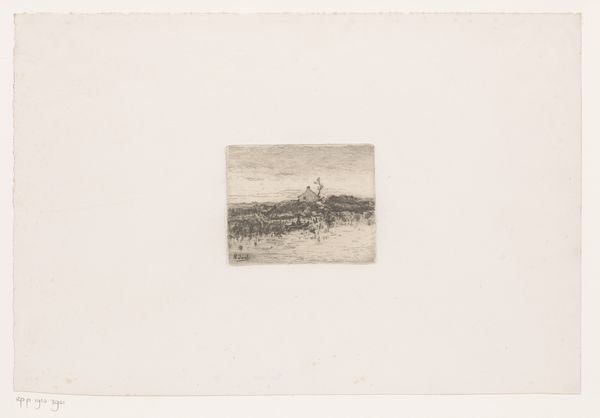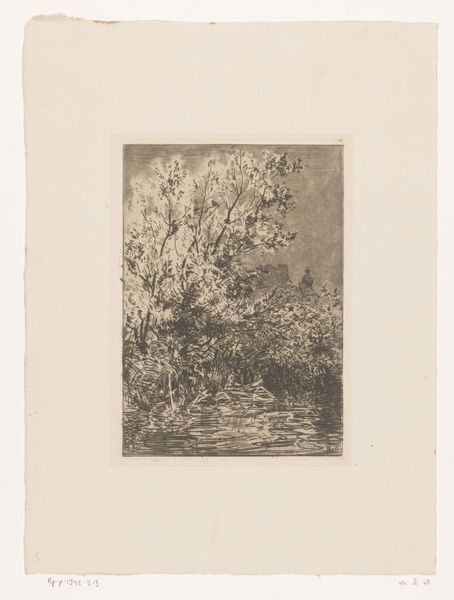
drawing, print, etching
#
drawing
# print
#
impressionism
#
etching
#
landscape
Dimensions: height 80 mm, width 119 mm
Copyright: Rijks Museum: Open Domain
Curator: Looking at this etching, the dense thicket and shaded fungi lend the piece a rather somber quality, don't you think? Editor: It certainly does. We are observing "Paddenstoelen," or "Mushrooms," by Jan Veth, dating to 1886. It’s currently held here at the Rijksmuseum. The visual weight of the work evokes the symbolic role of mushrooms, commonly seen as the emblem of both life and decay within different social, gendered and philosophical discourses. Curator: Interesting that you read a philosophical bent. I initially viewed the choice of subject, a seemingly humble group of mushrooms, through a more straightforward historical lens. Consider the period in which Veth created this—the late 19th century— where depictions of nature and the rural sphere became politically charged statements. Artists were aligning themselves in response to burgeoning industrialization. Editor: That's a pertinent point. These natural scenes allowed many artists a certain visibility in the period. Yet the medium itself is also key here. The conscious artistic decision to make a print suggests a certain awareness about making this scene available to a wider audience. Curator: True, the printmaking process introduces ideas of reproducibility and distribution, something important to consider when assessing the public role of art. It is the type of image one could see circulating amongst intellectual and artistic circles invested in a vision of simpler life. Editor: Precisely. Furthermore, the technique enhances the inherent ambiguities. The blurred delineation, combined with the inherent darkness of the composition, lends itself to a sense of transience, that resonates with ideas about ecological change and impermanence, that remains a topical discourse today. Curator: I think you've offered a fresh interpretation that I hadn’t considered previously. I was so caught up in the artwork's place within the history of landscape art. Editor: And you offered necessary social context! These dialogue are useful for offering multiple ways of seeing.
Comments
No comments
Be the first to comment and join the conversation on the ultimate creative platform.
